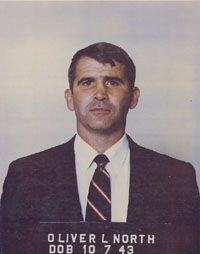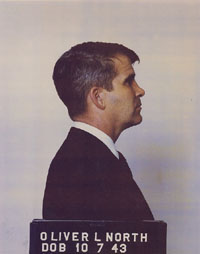Bioethics of Gender Selection, Part III
Gender Selection Using PGD
Gender Selection Using PGD
 Link skipping from Amygdala
to Peevish,
I encountered a link to an online magazine I haven't seen before.
Ann Arbor's own Juan Cole has an article
in this month's In These Times.
If you haven't yet run across Dr. Cole's blog, Informed
Comment, you might you to read it. He's a professor of
History at the University of Michigan. On his blog, he writes
about current
Mideast affairs with a fairly neutral, journalistic style.
Link skipping from Amygdala
to Peevish,
I encountered a link to an online magazine I haven't seen before.
Ann Arbor's own Juan Cole has an article
in this month's In These Times.
If you haven't yet run across Dr. Cole's blog, Informed
Comment, you might you to read it. He's a professor of
History at the University of Michigan. On his blog, he writes
about current
Mideast affairs with a fairly neutral, journalistic style. By
Christopher Lee
Washington Post Staff Writer
Wednesday, May 26, 2004; Page A25
The concern about possible future prosecution for war crimes—and that
it might even apply to Bush adminstration officials themselves—
is contained in a crucial portion of an internal January 25,
2002, memo by White House counsel Alberto Gonzales obtained by
NEWSWEEK. [...]

"The bottom line here is that much of the information the administration had about Iraq may have come from an Iranian agent," said the intelligence official. "If that's true, this is a huge scandal."

May 10, 2004 — Despite studies in leading medical journals warning of the ethical conflicts and high rates of prescribing that occur when physicians accept gifts from the pharmaceutical industry, many physicians and medical residents remain unaware of the impact of the drug industry's interaction with physicians, according to a new study.
For example, only 9% of internal medicine residents at Wake Forest
University School of Medicine and 18% of its faculty members surveyed
as part of the study said they were knowledgeable about the American
Medical Association's 2001 "Ethical Guidelines for Gifts to Physicians
from Industry," while 20% of residents and 67% of faculty said they
were aware of industry-sponsored research at academic centers. The
study was published in the May issue of Academic Medicine. [...]



 Yesterday, I wrote some background material on
fMRI. After I did that, I ran across a site, whimsically named fMRI for
Dummies. fMRI4Dummies contains the visual teaching material
for Psychology 554 at UWO,
as taught by Dr.
Jody Culham. Basically, it is a collection of .ppt and
.pdf files -- it'll take a while if you have a slow connection.
But if you are really interested,
go take a look. She put a lot of effort into this, and she does a
good job of making a tough subject a little more palatable. She
may be the Mary
Poppins of fMRI. So forget my introduction to the
subject, and use hers instead.
Yesterday, I wrote some background material on
fMRI. After I did that, I ran across a site, whimsically named fMRI for
Dummies. fMRI4Dummies contains the visual teaching material
for Psychology 554 at UWO,
as taught by Dr.
Jody Culham. Basically, it is a collection of .ppt and
.pdf files -- it'll take a while if you have a slow connection.
But if you are really interested,
go take a look. She put a lot of effort into this, and she does a
good job of making a tough subject a little more palatable. She
may be the Mary
Poppins of fMRI. So forget my introduction to the
subject, and use hers instead.The Dow ($INDU: news, chart) tumbled 127.32 points, or 1.3 percent, to 9,990.02, and at one point in late trading fell as low as 9,932.74. The last time the benchmark index closed below 10,000 was on Dec. 10, 2003, when it ended the session at 9,921.86.
The Nasdaq Composite ($COMPQ: news, chart) was off 21.89 points, or 1.1 percent, at 1,896.07, after falling to an intraday low of 1,880.32. The Philadelphia Semiconductor Index ($SOX: news, chart) ended up 0.4 percent, helping to limit losses on the tech-heavy Nasdaq.
The Standard & Poor's 500 Index ($SPX: news, chart) dropped 11.58 points, or 1.1 percent, to 1,087.12, while the Russell 2000 Index ($RUT: news, chart) of small-cap stocks fell 2 percent.
Casting a pall over the morning on Wall Street, Japan's blue-chip Nikkei average plunged more than 500 points, pressured by the specter of the Federal Reserve raising rates to 1.75 percent by the autumn from its current 46-year low of 1 percent.
"The markets were rattled by the global meltdown prior to the opening of the U.S. market," said Mike Holland, fund manager at the Holland Balanced Fund. "There was no serious attempt at changing the direction, with a weak afternoon rally fading.
Today,
Political Figure X, together with Secretary Y and
representatives of parents and a broad range of health
professionals, launched an unprecedented public-private effort to
ensure that children with emotional and behavioral conditions are
appropriately diagnosed, treated, monitored, and managed by qualified
health care professionals, parents, and educators. Federal actions she
will outline include: (1) the release of a new, easy to understand fact
sheet about treatment of children with emotional and behavioral
conditions for parents; (2) a new $5 million funding commitment by the
National Institute of Mental Health (NIMH) to conduct additional
research on the impact of psychotropic medication on children under the
age of seven; (3) the initiation of a process at the Food and Drug
Administration (FDA) to improve pediatric labeling information for
young children; and (4) a national conference on Treatment of Children
with Behavioral and Mental Disorders to take place this fall. Political
Figure X will also highlight actions taken by the private sector
to ensure
appropriate diagnosis and effective treatment of these children. All of
these actions build on the landmark work resulting from the first ever
White House Conference on Mental Health and the release of the
unprecedented Surgeon General's Report on Mental Health last year, both
of which were spearheaded by Political Figure Z, the President's Mental
Health
Advisor.
Answers: X=Hillary Rodham Clinton, Y=Secretary of Health and Human
Services Donna Shalala, and Z=Tipper Gore. The date was 3-20-2000
(link).
Next question, regarding the question of the safety and effectiveness
of drugs used in children: If the federal government was on the case in
2000, why
were we surprised in late 2003 when the
news (183 KB PDF) about equivocal efficacy of antidepressants used
in children, and a question about a
possible safety issue, were revealed? If Ms. Clinton et. al.
launched an effort to improve research in this area in 2000, why did it
take so long for the news to come out? And, more vexingly, why
was it the UK, and not the US, that broke the news? The following
news excerpts tell the story.
 |
 Prayer Resource
Prayer Resource | From NDP site |
From United States v. Oliver
L. North, Office of the Independent Counsel (OIC) Papers, National
Archives & Records Administration, College Park, Maryland. (link) |
 |
  |

 |
 |

Foreign advances in basic science now often rival or even exceed America's, apparently with little public awareness of the trend or its implications for jobs, industry, national security or the vigor of the nation's intellectual and cultural life.
"The rest of the world is catching up," said John E. Jankowski, a senior analyst at the National Science Foundation, the federal agency that tracks science trends. "Science excellence is no longer the domain of just the U.S."
Even analysts worried by the trend concede that an expansion of the world's brain trust, with new approaches, could invigorate the fight against disease, develop new sources of energy and wrestle with knotty environmental problems. But profits from the breakthroughs are likely to stay overseas, and this country will face competition for things like hiring scientific talent and getting space to showcase its work in top journals.
One area of international competition involves patents. Americans still win large numbers of them, but the percentage is falling as foreigners, especially Asians, have become more active and in some fields have seized the innovation lead. The United States' share of its own industrial patents has fallen steadily over the decades and now stands at 52 percent.


Zumeta's concerns about the nation's scientific future have grown over years of watching America's highest-achieving college students – the top 5-to-7 percent of scorers on the Graduate Record Exam (those who score 750 or higher) – drift away from careers in advanced research.
He and Raveling also examined the plans of senior science majors from a group of elite private colleges – members of the Consortium on Financing Higher Education – and found that the proportion who planned to enroll in graduate school the following fall had plummeted from 47 percent of the 1984 graduates to 28 percent in 1998. The decline among students with A averages was even steeper. The proportion of all the graduates who said they had no plans for graduate school at any time in the future more than doubled.
Foreign students continued to pump intellectual energy into U.S. graduate science and engineering programs during the early 1990s. But America's own homegrown college graduates – the highest-achieving ones – increasingly turned to relatively short postgraduate programs in business and health fields such as physical therapy, speech pathology and public health, according to results published last year by Zumeta and Joyce Raveling.
And in the late '90s, Zumeta and Raveling found that even foreign students were coming to American graduate programs in smaller numbers – an unprecedented reversal that could further diminish the quality of U.S. graduate study. This downtrend turned around for a few years around the turn of the century but threatens to reappear with the current barriers facing would-be immigrants to the United States.
Shunning science were elite science majors – both American and foreign – who might relish advanced study but were turned off by the decade-plus apprenticeships in low-paid doctoral and postdoctoral programs, followed by bitter struggles for the few faculty posts in a logjammed academic market. The result was that from 1992-2000, the number of top-scoring U.S. GRE-takers headed for graduate study in mathematics fell by 19 percent and engineering by 25 percent.
If you look at the NSF press release, and the Business Week interview with Bush's Science Czar (John Marburger), you see that the headlines are essentially positive. They emphasize the fact that the USA still has a prominent leadership position with respect to production of new technologies, and advancement of discoveries in basic science. Of course, the NSF and John Marburger represent the executive branch of the government, so they can be expected to try to put a positive spin on things. The newspapers know that negative news is what attracts attention, so they tend to write alarming titles. Eureka Alert is written by the American Association for the Advancement of Science (about). AAAS is a nongovernmental organization. They have their own agenda, of course, but their report seems to be the most balanced.